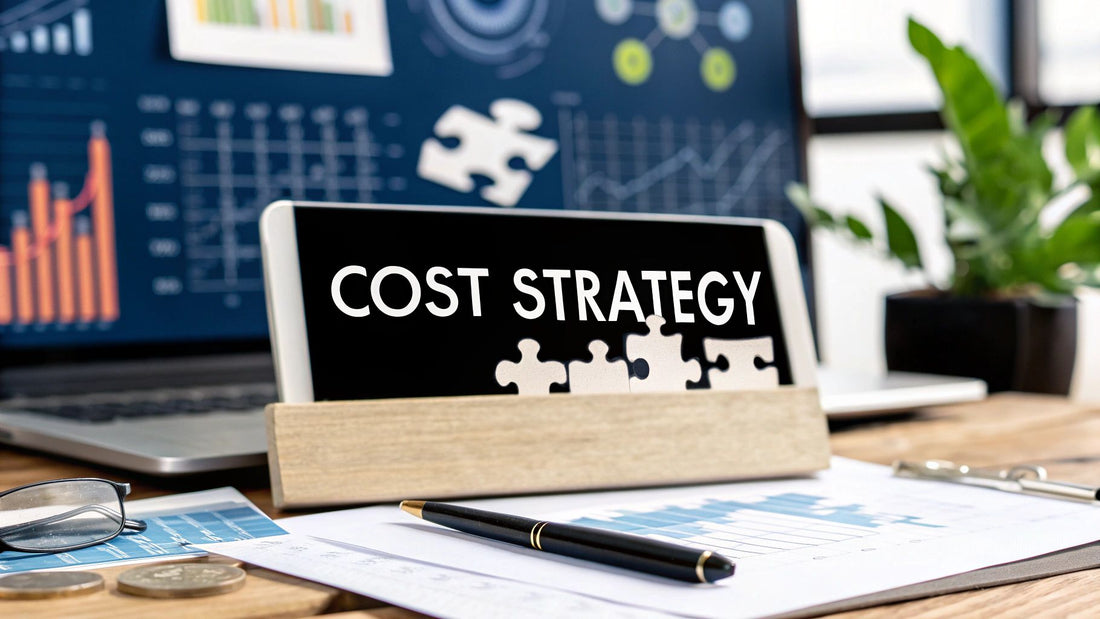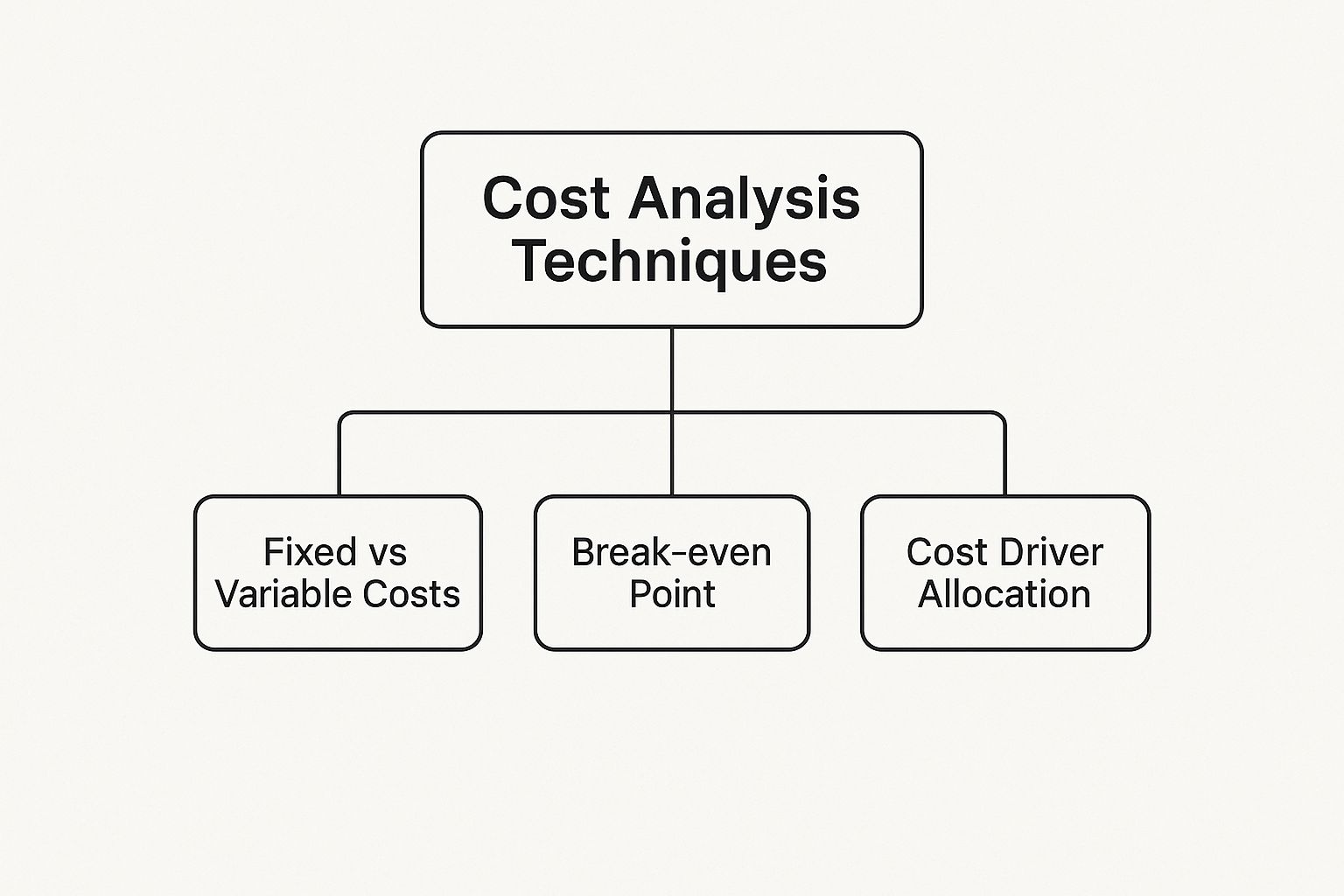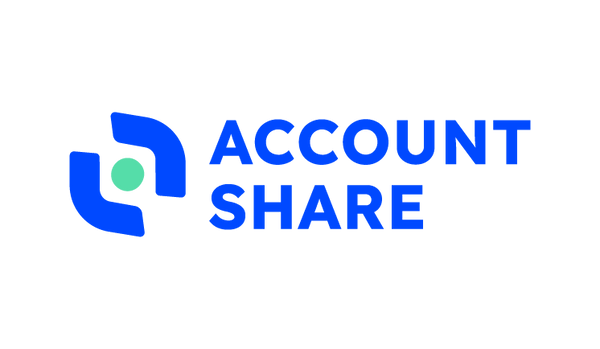
Strategic Cost Management for Sustainable Growth
Share
When people hear "cost management," they often think of short-term, sometimes painful, budget cuts. But strategic cost management is something entirely different. It's not about a quick fix or a crash diet for your expenses. Think of it more like a professional athlete’s training regimen—a sustained, intelligent approach that builds a stronger, more competitive organization for the long haul.
The real goal isn't just to slash spending; it's to maximize the value of every single dollar you invest in the business.
What Is Strategic Cost Management, Really?

At its heart, strategic cost management is about weaving cost analysis into the very fabric of your business strategy. It’s a complete mindset shift. Instead of asking, "How can we spend less?" the strategic question becomes, "How can we spend smarter to get where we want to go?"
This approach forces you to connect every financial decision directly to your position in the market. You have to dig deep to understand what truly drives costs in your business and, more importantly, how those costs create value for your customers.
From Reactive Cuts To Proactive Value
Traditional cost-cutting is often a knee-jerk reaction. Profits dip, and the first instinct is to take a hatchet to budgets across the board. The problem? This can cripple the very departments—like R&D or marketing—that are essential for future growth.
Strategic cost management is the opposite. It’s surgical. It’s about methodically identifying and eliminating activities that add little to no real value, while simultaneously protecting and even boosting investment in the areas that give you a competitive edge.
To better understand this fundamental difference, let's compare the two approaches side-by-side.
Strategic Cost Management vs Traditional Cost Cutting
| Attribute | Strategic Cost Management | Traditional Cost Cutting |
|---|---|---|
| Mindset | Proactive & long-term | Reactive & short-term |
| Focus | Value creation & competitive advantage | Expense reduction & budget targets |
| Scope | Cross-functional & company-wide | Departmental or siloed |
| Approach | Surgical & analytical | Broad & across-the-board |
| Outcome | Sustainable competitive advantage | Temporary relief, potential long-term harm |
As you can see, the two methods have completely different goals and outcomes. One is about building a lasting advantage, while the other is often just a temporary stopgap.
The core idea is to achieve cost leadership or product differentiation not by simply being the cheapest, but by being the most efficient and effective at delivering value. This creates a sustainable competitive moat that is difficult for rivals to replicate.
This shift in thinking is more critical than ever. In today's dynamic business world, static cost models just don't cut it anymore. Forward-thinking companies are moving toward more agile, data-driven strategies to get the most out of every expense.
Core Principles In Action
So, how does this work in practice? This strategic approach is built on a few foundational ideas that are deeply connected to broader finance principles. Getting these right is the first step toward building a successful program.
Here are the key components you need to know:
- Long-Term Perspective: Decisions are made with the next 3-5 years in mind, not just the next financial quarter.
- External Focus: It’s not just about internal expenses. You have to constantly look at competitor pricing, customer perceptions of value, and the stability of your supply chain.
- Cross-Functional Collaboration: This can't live solely in the finance department. To truly work, finance, operations, marketing, and sales must all be at the table, working together to manage costs and create value.
When you embed this way of thinking into your company's DNA, you do more than just save money. You build a business that is more resilient, competitive, and ready for whatever comes next.
The Three Pillars of Strategic Cost Management
If you want to move past simple, reactive cost-cutting, you need a solid foundation. True strategic cost management is built on three core ideas that all work together: Value Chain Analysis, Strategic Positioning, and Cost Driver Analysis. Getting a handle on these concepts is your first real step toward building a financial strategy that's both intelligent and durable.
Think of it like building a high-performance engine. You can't just have a powerful turbocharger; you need the pistons, the fuel system, and the cooling to work in perfect harmony. It’s the same with your cost strategy—each part is critical.
Pillar 1: Value Chain Analysis
First up is Value Chain Analysis. This is all about mapping out every single step your business takes to get a product or service into a customer's hands. I mean everything. This isn’t a high-level departmental overview; it’s a detailed look at the entire journey, from the first sketch in R&D and sourcing raw materials to marketing, sales, and customer support after the purchase.
When you lay out the entire chain visually, you can start to see clearly which activities create real value for your customers and which ones are just sucking up resources. The goal here is twofold: make the value-adding steps more efficient and then trim or get rid of the activities that don't help you compete. For example, a business might dig in and find that a whopping 15% of its logistics costs are tied up in a clunky warehousing step that customers neither see nor care about.
Pillar 2: Strategic Positioning
Your Strategic Position is the second pillar, and it really just answers the question: how do you choose to compete? Are you aiming to be the cost leader in your industry, like a budget airline that wins on price? Or are you a differentiator, offering a premium product with unique features, like a luxury car manufacturer?
This single choice changes the entire game and shapes every cost decision you make from here on out.
- Cost Leaders are obsessed with efficiency, standardization, and scale. Every part of their value chain is fine-tuned to keep expenses as low as humanly possible.
- Differentiators, on the other hand, strategically pour money into things like research, branding, and top-tier materials. They’re perfectly willing to spend more in certain areas because that’s what creates the premium feel that lets them charge a higher price.
Knowing your position keeps you from shooting yourself in the foot. A luxury brand can't start using cheap materials to save a buck, just as a low-cost airline can't start offering complimentary champagne service.
Pillar 3: Cost Driver Analysis
The final piece of the puzzle is Cost Driver Analysis. Think of this as your diagnostic tool for figuring out the root cause of your expenses. A cost driver is simply any factor that makes the cost of an activity go up or down.
A classic mistake is to just look at the total spend for a department. A proper cost driver analysis goes deeper and asks why that cost exists in the first place. For instance, the number of customer support tickets is a major driver of support staff costs, while the number of machine setups on a factory floor drives manufacturing overhead.
This analysis is absolutely vital for effective management. When you identify and manage these drivers, you can control costs at their source instead of constantly reacting to the symptoms. To get more specific on how you can assign these expenses, it's worth exploring different cost allocation methods that help you see exactly where your money is going.
The image below breaks down some of the fundamental techniques used in cost analysis to get a better handle on these drivers.

As you can see, understanding the nature of your costs and what specifically drives them is the bedrock of making smart, strategic decisions.
Putting Key Frameworks and Methodologies Into Action

Once you've grasped the core ideas of strategic cost management, the next step is moving from theory to practice. This is where you adopt specific frameworks that turn a high-level plan into concrete, daily actions. The right methodology gives you the structure you need to systematically analyze, control, and ultimately optimize your spending.
Of course, choosing a framework isn't a one-size-fits-all deal. It really depends on your specific industry, business model, and what you’re trying to achieve. To get started, it's wise to explore various modern approaches, like these high-impact cost reduction strategies.
Let’s dig into a few of the most effective frameworks I've seen in action.
Activity-Based Costing for True Precision
One of the most powerful tools in the shed is Activity-Based Costing (ABC). Instead of just spreading overhead costs like rent or admin salaries across departments with a broad brush, ABC gets granular. It connects those costs directly to the activities that cause them.
Think of it like this: a traditional cost system might allocate overhead based on direct labor hours. But what if one product is simple to make and another is incredibly complex? ABC identifies the specific "activities"—like machine setups, quality checks, or processing purchase orders—and assigns costs based on how much each product actually uses those activities. This gives you a far more accurate picture of which products are truly profitable.
Target Costing: Designing for Profit from Day One
Target Costing flips the usual pricing model on its head. Most companies design a product, figure out what it costs to make, and then slap a profit margin on top to get the price. Target Costing starts with the customer.
It's a simple, but profound, shift in thinking:
- Find the Target Price: First, you figure out the competitive price point the market will accept for a product with a certain set of features.
- Set the Target Profit: From that price, you subtract the profit margin your business needs to hit its goals.
- Calculate the Target Cost: What’s left is your target cost. This is the absolute maximum you can spend to produce the product and still be profitable.
This approach forces your design, engineering, and procurement teams to innovate from the very beginning. They have a clear cost goal to work toward, ensuring the product is born profitable.
This proactive method is a cornerstone of smart cost management. It bakes cost awareness directly into the product development cycle, which helps you avoid expensive redesigns down the road.
A Critical Look at Zero-Based Budgeting
You’ve probably heard of Zero-Based Budgeting (ZBB). It’s the method where every department has to justify its entire budget from scratch every single year. Nothing gets rolled over. While it sounds great for forcing a deep re-evaluation of all spending, its real-world track record is a bit spotty.
In fact, ZBB seems to be falling out of favor. One Deloitte study found that only 16% of companies had used ZBB in the prior two years. What's more, those firms actually saw higher failure rates (65%) in their cost-cutting programs than companies that didn't use ZBB. The biggest complaints usually revolve around the massive amount of time and resources it eats up every budget cycle.
Kaizen Costing for Continuous Improvement
Finally, there’s Kaizen Costing. This Japanese philosophy is all about making small, continuous improvements rather than aiming for a single, radical overhaul. The goal is to empower every employee to constantly look for and eliminate waste in their daily work.
It’s less of a big-bang project and more about building a culture of ongoing, incremental cost reduction. By making small, consistent tweaks, companies can achieve major savings over the long term without the disruption that comes with more aggressive frameworks. This approach fits perfectly with a long-term strategic vision.
Uncovering Benefits Beyond the Bottom Line
While the immediate goal of any cost strategy is to boost financial health, a smart strategic cost management plan does so much more. Its benefits ripple through the entire company, going far beyond just the numbers on a balance sheet. Think of it less as just saving money and more as building a smarter, more agile, and resilient business from the ground up.
When you move from making reactive cuts to proactively creating value, you open up a world of new competitive advantages. Suddenly, you have the breathing room to make bolder moves—like aggressively dropping prices to grab market share or funneling those savings into innovation that leaves your competitors scrambling. This is how cost management becomes a real engine for growth.
A business that masters its costs can master its destiny. Enhanced cost transparency doesn't just reduce expenses; it sharpens decision-making, allowing leaders to allocate resources with confidence and speed.
By methodically finding and ditching activities that don't add real value, you automatically make your operations more efficient. This creates a leaner organization where everyone can focus their energy on what truly matters.
A Sharper Competitive Edge
Strategic cost management directly sharpens your competitive standing. It gives you the financial clarity to make better decisions in every single department. For example, once you understand the real cost drivers in your marketing department, mastering the art of optimizing marketing spend for maximum ROI stops being a nice idea and becomes a tangible goal.
This kind of deep insight allows for:
- More Strategic Pricing: You can confidently set prices that are both competitive in the market and healthy for your profit margins.
- Targeted Innovation: You can fund the R&D projects that promise the highest return, knowing you have the financial muscle to see them through.
- Improved Agility: You’re able to pivot quickly when the market shifts or supply chains get disrupted because you have a crystal-clear view of your financial levers.
This enhanced visibility transforms your finance team from a group of scorekeepers into a true strategic partner for the entire company.
Fostering a Culture of Accountability
Perhaps one of the most powerful, long-term benefits is the cultural shift that happens. When cost transparency is just how you do business, accountability naturally follows. Every team can see exactly how their spending connects to the company's bigger goals, which encourages responsible financial thinking at every level. It builds a mindset of ownership and continuous improvement.
You can dive deeper into these concepts by exploring these 10 proven cost optimization strategies for 2025, which lay out practical ways to make these benefits a reality. In the end, this approach builds a company that isn’t just leaner, but also smarter and more united in its mission for long-term success.
Navigating Modern Cost Management Challenges

The business world today is anything but predictable. We’re all dealing with shaky supply chains, lightning-fast tech changes, and customers whose expectations seem to shift overnight. These pressures mean the old way of managing costs—setting a budget once a year and hoping for the best—just doesn't cut it anymore. That static approach is a recipe for falling behind.
To stay afloat and actually grow, businesses need a cost management system that’s alive and responsive. Think of it like a captain steering a ship through a sudden storm; you have to constantly adjust your sails to match the wind. It’s all about building a system that anticipates disruption, not one that just cleans up after it.
Tailoring Strategies to Industry Needs
Cost management isn't a one-size-fits-all game. The hurdles and priorities for a tech startup look completely different from those of a large manufacturing plant. Applying the same generic advice to both is bound to fail.
The numbers tell the same story. A recent BCG.com study found that business leaders, on average, only hit 48% of their cost-saving targets. Why? Because effective cost management is highly specific. This is especially clear when you look at how priorities differ across industries.
This table shows how different sectors are focusing their strategic cost management efforts on specific operational areas to drive competitive advantage.
| Priority Area | Key Industries | Strategic Goal |
|---|---|---|
| Supply Chain Optimization | Consumer Goods, Industrial, Automotive | Build resilience, reduce logistics costs, manage inventory |
| Product Portfolio Simplification | Tech, Software, Financial Services, Insurance | Focus resources on high-profit offerings, cut complexity |
| Operational Efficiency | Manufacturing, Healthcare | Automate processes, reduce waste, improve workflows |
| Marketing & Sales Spend | Retail, E-commerce, Media | Maximize ROI on campaigns, optimize customer acquisition |
What this data makes clear is that successful cost management isn't about chasing every possible saving. It’s about knowing your industry's unique pressures and aiming your efforts where they'll make the biggest difference.
This reality underscores a critical point: successful strategic cost management is not about applying a generic formula. It is about deeply understanding your specific operational landscape and focusing your efforts where they will have the most significant impact.
Real-World Examples in Action
Let’s make this more concrete. Imagine a consumer goods company grappling with soaring shipping fees and material shortages. Their strategy would be laser-focused on their supply chain, maybe by finding new suppliers or using better tech to predict demand.
Now, consider a software company. Their biggest expenses are probably tied to developing and marketing their products. A smart move for them would be to simplify their product line, ditching the underperformers to pour more resources into the ones that actually make money. This cuts down on development clutter and overhead.
Here’s a quick breakdown:
- Manufacturing: Focuses on lean production, automation, and supply chain resilience.
- Technology: Prioritizes R&D efficiency and simplifies complex product portfolios.
- Retail: Centers on inventory management and optimizing sales and marketing spend.
Each company is aligning its cost strategy with its core business and market pressures. For more actionable ideas, you can check out our guide on how to reduce business costs with 7 smart tips.
Ultimately, creating a responsive cost strategy is about building an organization that can roll with the punches and thrive in a world of constant change. It’s a nonstop cycle of learning, adapting, and making smart choices that pave the way for long-term health and growth.
Your Questions, Answered
As you start thinking about strategic cost management, a few questions always seem to pop up. Let's tackle them head-on. My goal here is to clear up any confusion and give you the confidence you need to put these ideas into practice.
How Is This Different From Simple Cost Cutting?
This is the big one, and it’s the most important distinction to make.
Traditional cost-cutting is often a knee-jerk reaction. Think of it as taking a blunt axe to your budget when times get tough. You slash expenses across the board, but this approach can easily chop away at the very things your business needs to survive and grow in the long run.
Strategic cost management is the complete opposite. It’s a proactive, ongoing process. Instead of blind cuts, you're making surgical decisions that align every single dollar of spending with your company's core strategy. The aim is to methodically remove waste from activities that don’t add real value while simultaneously protecting—or even boosting—investment in the areas that give you a competitive edge.
What’s the Biggest Challenge When Implementing This?
Hands down, the single biggest hurdle is almost always cultural resistance.
Shifting an entire organization from a siloed, "save money at all costs" mindset to a collaborative, value-focused one is a massive undertaking. It’s not something you can just announce in a memo; it requires genuine buy-in from the C-suite all the way to your frontline employees.
You’re asking people to think differently. They have to learn to look beyond their own department's budget and understand how their daily choices impact the company’s entire value chain.
Overcoming this cultural inertia is everything. It takes strong leadership, consistent communication about the "why" behind the change, and celebrating early wins to show everyone the tangible benefits. That's how you build momentum.
Can Small Businesses Really Benefit From This?
Absolutely. In fact, you could argue they stand to gain the most.
While the scale is different, the core principles are universal. Small businesses operate with tighter resources, which means making every dollar count isn't just a good idea—it's essential for survival.
This doesn't have to be overly complicated. A small business can run a simplified Value Chain Analysis to see exactly where its money and effort create the most bang for the buck. This often reveals inefficiencies that larger, more bureaucratic companies might miss.
For a small business, a strategic approach might look like:
- Smart Automation: Investing in the right software to handle repetitive admin work, freeing up precious time to focus on customers and growth.
- Smarter Supplier Deals: Instead of just accepting standard rates, renegotiating with key suppliers for better pricing or more flexible payment terms.
- Focused Marketing: Rather than cutting the marketing budget, using data to double down on the channels that actually deliver high-quality leads.
It’s all about putting your limited resources where they’ll have the biggest impact. This ensures you're building a resilient business that can compete smarter, not just cheaper.
Ready to stop overpaying and start sharing? With AccountShare, you can get access to premium tools and services at a fraction of the cost by joining a group. Streamline your digital life and manage all your shared subscriptions securely in one place. Explore shared plans on AccountShare today!
